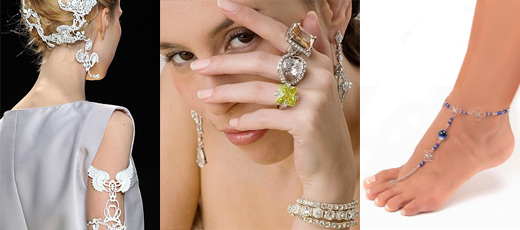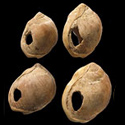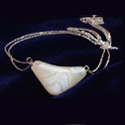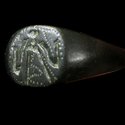Being an astute bidorbuyer, it will not come as a surprise to you that jewellery and watches are perpetually in the lead among the bidorbuy categories.
Watches we understand. After all, they serve a practical purpose. But what is it about jewellery that’s so attractive to humans?
Well, truth to be told, no one knows.
We only know that the need to adorn one’s person goes back thousands of years. Apparently, our ancestors decided to use pebbles, shells, animal teeth, and similar objects fashioned by nature as ornaments at about the same time they evolved into humans.
We also know (or think we know) that the earliest pieces of jewellery were necklaces and bracelets, because they are so easy to make (even by prehistoric standards). All our ancestors had to do was pierce a pretty shell, thread a string through the hole, tie the string around the neck or wrist – and they were ready to proudly parade up and down the jungle (or a similar undeveloped site) for all other prehistoric people to see their ornament.
From those humble beginnings, jewellery advanced to adorn nearly every body part, from head to toe (literally). Still, as bidorbuy jewellery shopping patterns confirm, some body parts are more equal that others when it comes to being ornament-worthy.
So, what specific pieces of jewellery bidorbuyers like to adorn themselves with?
The Recent buys section reveals this telling shopping pattern:
During the week under scrutiny (1-7 March 2012), bidorbuyers bought almost 1600 pieces of jewellery. Exactly 623 of them were rings. Necklaces and pendants followed with 346 pieces sold (still popular, all those centuries later!), then earrings (201), bracelets and bangles (113), charms and charm bracelets, antique jewellery, etc, etc.
By all accounts, prehistoric men were equal to prehistoric women when it came to strutting jewellery. Alas, in the meantime this state of affairs has 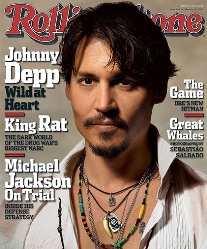 deteriorated seriously. Out of almost 1600 items of jewellery sold during the first week of March on bidorbuy, only thirty two (yes, 32!) were in the section entitled men’s jewellery. The males of the species bought for own adornment purposes: eighteen rings, five bracelets, four necklaces, three pendants, one single pair of cufflinks, and one single tie pin.
deteriorated seriously. Out of almost 1600 items of jewellery sold during the first week of March on bidorbuy, only thirty two (yes, 32!) were in the section entitled men’s jewellery. The males of the species bought for own adornment purposes: eighteen rings, five bracelets, four necklaces, three pendants, one single pair of cufflinks, and one single tie pin.
And there you have it, the reason for the decline in gents’ jewellery sector: the guys are wearing T-shirts, instead of a formal suit and tie… O tempora, o mores!
Until the fashion changes, it remains on the females of the spices to sustain the ancient art of jewellery wearing. In their hair. On their toes. And practically everywhere in-between.

